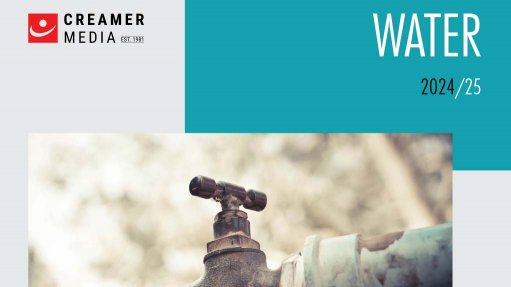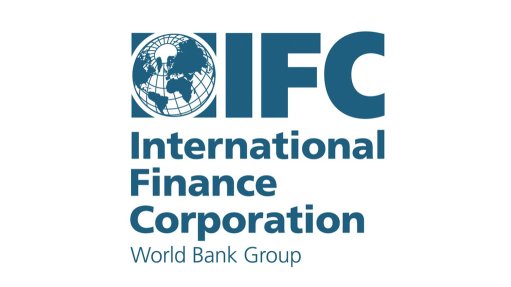A smarter approach to balancing bold innovation with business stability
This article has been supplied and will be available for a limited time only on this website.
By Rafael Rodriguez - is Partner at iqbusiness, Africa’s future-focused management and digital growth enabler, and leads midnight, the innovation agency of iqbusiness
Innovation is the lifeblood of business but, if we’re being honest, it’s also a headache for many leaders in business. Move too fast, and you risk alienating customers, regulators, and your own shareholders. Move too slow, and your competitors not only eat your lunch but invent an entirely new method of nutrition delivery too.
The trick to getting it just right is knowing how to push the boundaries without breaking the business.
In our work with executives across industries, we’ve found that the best leaders don’t just chase the next big thing. They build careful systems that allow the coexistence of both bold innovation and measured execution. Through a finely constructed four-step balancing act, it’s possible to do it well.
1. Validate before venturing
The best innovation decisions might be sparked by a gut feel, but they are meticulously backed by data, foresight, and careful testing. Successful innovators are able to look forward, not just around, the next big thing. By investing in trend analysis and customer research, they put themselves in a position to anticipate market shifts rather than simply reacting to them. A smart next step is to couple analysis with initial small-scale experiments, such as prototypes, pilot programmes, or concept testing, to allow refinement of ideas before committing significant resources. Astute organisations that keep an eye on regulatory changes and industry dynamics are also better positioned to ensure that snap compliance doesn’t become an innovation roadblock.
Ultimately, businesses that question every single angle and move from a place of data-driven strength and not just a big budget blitz are the ones that will pull ahead of the competition. Our team recently worked with a leading bank that was set to approve a multi-million Rand software overhaul, until early testing revealed that a simple tweak in their call-centre training could deliver the same results for a fraction of the price.
2. Aligning innovation with strategy
Innovation without alignment is just a distraction. The most successful executives today are ensuring that every single new idea fits into the bigger business strategy, and has a purpose beyond just the bottom line.
In fact, the best leaders structure their innovation efforts with a mix of incremental improvements, adjacent innovations, and transformative bets to maintain steady progress, all while managing ongoing risk. To execute this effectively requires the establishment of clear decision-making criteria which helps leaders at every level across a business determine when to pursue, pause, or pivot an initiative before it drains time and resources.
This also decentralises both the responsibility and power to innovate beyond one or two core personnel or committees, while holding leadership accountable to their commitment to innovate.
Effective governance structures can enable innovation by providing oversight that supports experimentation rather than stifling it, ensuring that it is aligned with the overarching strategy and need to ensure that bold ideas don’t derail day-to-day operations.
3. Safe spaces
Almost every business leader in South Africa today knows how vital it is to embrace failure, in theory. Few know how to do this practically and safely.
The key is to de-risk innovation while still allowing for bold thinking. To do this, we need to give innovation its own playground, by establishing dedicated teams, incubators, or innovation hubs within an enterprise that allow for faster experimentation without disrupting core operations. Shoprite X do this very effectively, and businesses across our economy would do well to follow their example in empowering teams to fail fast, fail safely and push forward to the next frontier.
Of course, this doesn’t mean pushing to conclusion at all costs. Adopting a phased rollout approach, rather than an all-or-nothing launch, can refine ideas based on real-world feedback, and brave innovators will use this feedback to reduce or avoid costly missteps.
The decision to “scale or scrap” is a tough call to make when the strategic push is for an unique outcome. By setting clear success criteria, the people pushing, adapting and iterating can identify which innovations to scale up and which to abandon before they become expensive distractions or corporate disasters.
All too often, we see businesses that are able to swiftly and successfully set up pockets of excellence in which small teams immediately thrive under agile, experimental conditions. However, the rest of the business quickly lags behind without a complementary push to balance decentralised success through a centre of excellence led from the top. Yes, it might slow things down in the short term, but when risk, legal, and compliance teams are brought in early, innovation becomes more scalable and ultimately less vulnerable in the long run.
4. Market the future, not just the product
Finally, and perhaps most importantly, the sales adage that ‘people buy from people’ is more true than ever in our digital age.
The best innovations will fail if people don’t buy into them both internally and externally. Framing innovation as an evolution rather than a disruption will help employees and customers see change as progress, making adoption much smoother. Internally, employees, just like customers, need to understand the ‘why’ behind new innovations so they can actively support and champion them in a world that is constantly changed and where the people in it are grappling for certainty in every context.
A key part of empowering employees and customers is to track the right metrics and accurately attribute success to the correct campaigns or channels. This doesn’t have to come with a huge price tag and, in fact, we’ve seen businesses launch digital campaigns that should be game-changing, only to see them flop because they weren’t tracking the right metrics. The ability to attribute success to the right channels is the difference between traction and spinning wheels.
Get it done
Innovation isn’t about reckless leaps. It’s about creating an environment where bold ideas can thrive without destabilising the business. The businesses that get this right don’t just survive market shifts: they lead them.
Comments
Press Office
Announcements
What's On
Subscribe to improve your user experience...
Option 1 (equivalent of R125 a month):
Receive a weekly copy of Creamer Media's Engineering News & Mining Weekly magazine
(print copy for those in South Africa and e-magazine for those outside of South Africa)
Receive daily email newsletters
Access to full search results
Access archive of magazine back copies
Access to Projects in Progress
Access to ONE Research Report of your choice in PDF format
Option 2 (equivalent of R375 a month):
All benefits from Option 1
PLUS
Access to Creamer Media's Research Channel Africa for ALL Research Reports, in PDF format, on various industrial and mining sectors
including Electricity; Water; Energy Transition; Hydrogen; Roads, Rail and Ports; Coal; Gold; Platinum; Battery Metals; etc.
Already a subscriber?
Forgotten your password?
Receive weekly copy of Creamer Media's Engineering News & Mining Weekly magazine (print copy for those in South Africa and e-magazine for those outside of South Africa)
➕
Recieve daily email newsletters
➕
Access to full search results
➕
Access archive of magazine back copies
➕
Access to Projects in Progress
➕
Access to ONE Research Report of your choice in PDF format
RESEARCH CHANNEL AFRICA
R4500 (equivalent of R375 a month)
SUBSCRIBEAll benefits from Option 1
➕
Access to Creamer Media's Research Channel Africa for ALL Research Reports on various industrial and mining sectors, in PDF format, including on:
Electricity
➕
Water
➕
Energy Transition
➕
Hydrogen
➕
Roads, Rail and Ports
➕
Coal
➕
Gold
➕
Platinum
➕
Battery Metals
➕
etc.
Receive all benefits from Option 1 or Option 2 delivered to numerous people at your company
➕
Multiple User names and Passwords for simultaneous log-ins
➕
Intranet integration access to all in your organisation


















